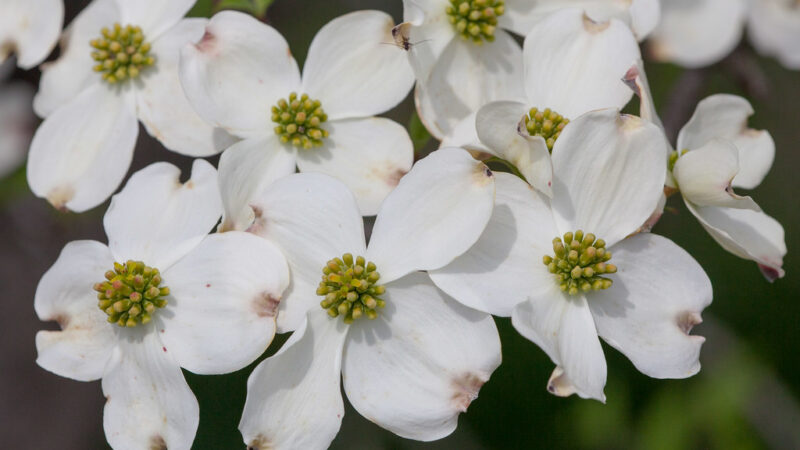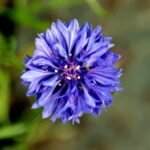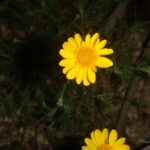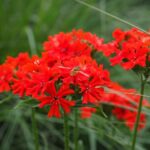Watering and fertilizing the flowering dogwood

Providing the appropriate amounts of water and nutrients is fundamental to the health and vitality of a flowering dogwood. These two aspects of care are interconnected, as proper hydration is necessary for the tree to absorb and utilize soil nutrients effectively. An optimal regimen for watering and fertilizing takes into account the tree’s age, the time of year, and the specific conditions of the soil and climate. Achieving the right balance will not only promote lush foliage and a spectacular bloom but will also fortify the tree’s natural defenses against common pests and diseases, ensuring it remains a stunning feature in the landscape for many years.
Understanding the water needs
The flowering dogwood has a relatively shallow root system, which makes it particularly sensitive to fluctuations in soil moisture. Unlike deep-rooted trees that can access water from lower soil profiles, the dogwood relies on the moisture present in the upper layers of the soil. This characteristic means it is not particularly drought-tolerant and requires consistent moisture to thrive, especially during its establishment phase and during the hot, dry months of summer. Inadequate water is a primary source of stress for dogwoods, often leading to leaf scorch, wilting, a weakened state, and increased vulnerability to pests like the dogwood borer.
The goal of watering is to maintain evenly moist soil, not soil that is constantly saturated or waterlogged. Overwatering is just as harmful as underwatering and can lead to fatal root rot diseases. The key is to water deeply and infrequently, rather than providing shallow, frequent sprinklings. Deep watering encourages the roots to grow deeper into the soil, creating a more resilient and extensive root system. A general guideline for a newly planted tree is to provide about 10 gallons of water once or twice a week, applied slowly to allow it to soak in rather than run off.
The frequency of watering must be adapted to the prevailing environmental conditions. During periods of high heat and no rainfall, watering will need to be more frequent. Conversely, during cool, rainy periods, supplemental irrigation may not be necessary at all. The best way to determine if a dogwood needs water is to check the soil manually. Dig down two to four inches near the tree’s drip line; if the soil feels dry to the touch at that depth, it is time to water. This hands-on approach is far more reliable than adhering to a rigid, predetermined schedule.
As the tree matures, its water needs will evolve. A well-established dogwood, typically after two to three years in the ground, will have a more developed root system and will be more capable of withstanding short dry periods. However, it will still benefit greatly from supplemental watering during prolonged droughts. Maintaining a healthy layer of organic mulch around the base of the tree at all stages of its life is one of the most effective ways to help manage soil moisture. Mulch acts like a sponge, soaking up water and releasing it slowly while also reducing evaporation from the soil surface.
More articles on this topic
Best practices for irrigation
Effective irrigation for a flowering dogwood is about the method of delivery as much as the frequency. The aim is to deliver water directly to the root zone, which extends from the trunk out to the edge of the tree’s canopy, known as the drip line. Using a soaker hose or a drip irrigation system is highly efficient, as these methods apply water slowly and directly to the soil, minimizing wastage through evaporation and runoff. They also help to keep the foliage dry, which is important because wet leaves can create an environment conducive to the development of fungal diseases like powdery mildew and anthracnose.
If using a standard hose, it is best to place it on the ground and let it run at a slow trickle, moving it to several spots around the tree’s drip line to ensure even distribution. This slow application allows the water to penetrate deeply into the soil profile rather than just wetting the surface. Avoid using a high-pressure sprayer to water the base of the tree, as this can erode the soil and expose the sensitive surface roots. Watering should ideally be done in the early morning, which allows any moisture that does get on the leaves to dry quickly as the sun rises, further reducing the risk of disease.
For newly planted trees, a watering bag can be an excellent tool. These are specially designed bags that wrap around the trunk of the tree and have small holes in the bottom. They are filled with water and release it very slowly over several hours, ensuring a deep and thorough soaking directly to the root ball. This method is particularly useful for ensuring young trees receive the consistent moisture they need during their critical first year of establishment. It takes the guesswork out of watering and is highly efficient.
It’s also important to consider the soil type when developing an irrigation strategy. Sandy soils drain very quickly and will require more frequent watering than heavier clay soils. However, clay soils, while holding moisture longer, can become waterlogged if overwatered. This is why amending the soil with organic matter before planting is so beneficial; it helps to create a balanced medium that retains moisture but also allows excess water to drain away. Understanding your specific soil composition is key to fine-tuning your watering practices for optimal tree health.
More articles on this topic
The role of fertilizer in tree health
Fertilizer plays a crucial role in supplementing the natural nutrient supply in the soil, ensuring that the flowering dogwood has the essential elements it needs for healthy growth. The primary macronutrients required by plants are nitrogen (N), phosphorus (P), and potassium (K). Nitrogen is vital for leafy, vegetative growth; phosphorus is essential for root development and flower production; and potassium contributes to overall plant vigor and resilience to stress. A balanced supply of these, along with various micronutrients, is necessary for the tree to perform all its metabolic functions.
While fertilizer is beneficial, it is not a cure-all for a struggling tree. A common mistake is to apply fertilizer to a tree that is stressed from other factors, such as drought, poor drainage, or disease. In fact, fertilizing a stressed tree can make the problem worse, as the tree may not have the resources to process the nutrients, and the salts in the fertilizer can further dehydrate an already water-stressed root system. Therefore, the first step should always be to address any underlying environmental or health issues before considering a fertilization program. Water, proper siting, and healthy soil are far more critical than supplemental feeding.
For a healthy, established flowering dogwood growing in fertile, organically rich soil, supplemental fertilization may not be necessary every year. The natural decomposition of an organic mulch layer can provide a slow and steady supply of nutrients. However, in nutrient-poor soils or for trees that show signs of deficiency, such as pale leaves or stunted growth, a targeted application of fertilizer can be very effective. A soil test is the most scientific way to determine exactly which nutrients are lacking and to ensure the soil pH is in the correct range for nutrient uptake.
Ultimately, the goal of fertilization is to support the tree’s natural growth cycle, not to force excessive growth. Rapid, lush growth spurred by high-nitrogen fertilizers is often weak and more susceptible to breaking in storms and attracting pests. A balanced approach that focuses on building healthy soil and supplementing only when necessary will lead to a stronger, healthier, and more beautiful flowering dogwood in the long term.
Choosing the right fertilizer
When selecting a fertilizer for a flowering dogwood, it is important to choose one that is appropriate for its specific needs. As an acid-loving plant, a dogwood benefits from fertilizers formulated for species like azaleas, rhododendrons, and hollies. These formulations not only provide a balanced ratio of N-P-K but also contain acidifying agents like sulfur or ammonium sulfate, which help to maintain the low soil pH that dogwoods require to effectively absorb nutrients from the soil. Using a general-purpose lawn fertilizer, which is typically high in nitrogen, should be avoided as it can lead to excessive leaf growth at the expense of flowers.
Slow-release granular fertilizers are an excellent choice for trees. These products are designed to break down gradually over several months, providing a steady and sustained release of nutrients that aligns with the tree’s needs throughout the growing season. This prevents the boom-and-bust cycle of growth that can occur with quick-release liquid fertilizers and reduces the risk of burning the tree’s roots. Organic fertilizers, such as compost, well-rotted manure, or specialized organic blends, are also highly beneficial as they feed the soil life and improve soil structure in addition to providing nutrients.
The numbers on a fertilizer bag, known as the N-P-K ratio, represent the percentage by weight of nitrogen, phosphorus, and potassium. A balanced fertilizer, such as 10-10-10, can be suitable if a soil test indicates no major imbalances. However, if the goal is to promote flowering, a fertilizer with a higher middle number (phosphorus), such as a 5-10-5, might be more appropriate. It is always wise to follow the application rates recommended on the product label, as applying too much can be harmful.
For gardeners who prefer a more natural approach, relying on organic soil amendments can be a very effective long-term strategy. Annually top-dressing the soil around the tree with a layer of high-quality compost provides a full spectrum of macro- and micronutrients in a slow-release form. This practice also feeds the beneficial microorganisms in the soil, which in turn make nutrients more available to the tree’s roots. This holistic approach to soil fertility builds a healthy ecosystem that supports the tree naturally.
Application timing and techniques
The timing of fertilizer application is critical to ensure that the nutrients are available when the tree needs them most. The ideal time to fertilize a flowering dogwood is in the early spring, just as the buds are beginning to swell and before new growth starts. This provides the tree with the resources it needs to fuel its spring growth flush and flower production. A secondary, lighter application can sometimes be made in the early summer, but fertilizing should be avoided after late July. Late-season fertilization can stimulate new growth that does not have time to harden off before the first frost, making it vulnerable to winter damage.
Proper application technique is essential to deliver the fertilizer effectively and safely. For granular fertilizers, the product should be broadcast evenly over the soil surface, covering the entire root zone. This zone extends from about a foot away from the trunk out to the drip line of the branches. It is imperative not to place fertilizer directly against the trunk of the tree, as the high concentration of salts can cause severe damage to the bark and cambium layer. A handheld spreader can help to ensure an even distribution over this large area.
After the fertilizer has been spread, it should be watered in thoroughly. This serves two important purposes: it helps to move the nutrients down from the surface into the root zone where they can be absorbed, and it dilutes the fertilizer salts, preventing them from burning the roots. If there is a layer of mulch around the tree, the fertilizer can be applied on top of the mulch before watering, or the mulch can be temporarily raked back, the fertilizer applied, and the mulch then replaced.
It is important to avoid fertilizing a dogwood during times of stress, particularly during a drought. A tree that is suffering from lack of water cannot effectively take up nutrients, and the application of fertilizer can worsen its condition by adding to the osmotic stress on the roots. Always ensure the tree is well-hydrated before applying any fertilizer. If the tree appears unhealthy, it is crucial to diagnose the underlying problem—be it water, disease, or pests—before reaching for the fertilizer bag.
📷 Flickr / Szerző: David Illig / Licence: CC BY-NC-SA 2.0

















